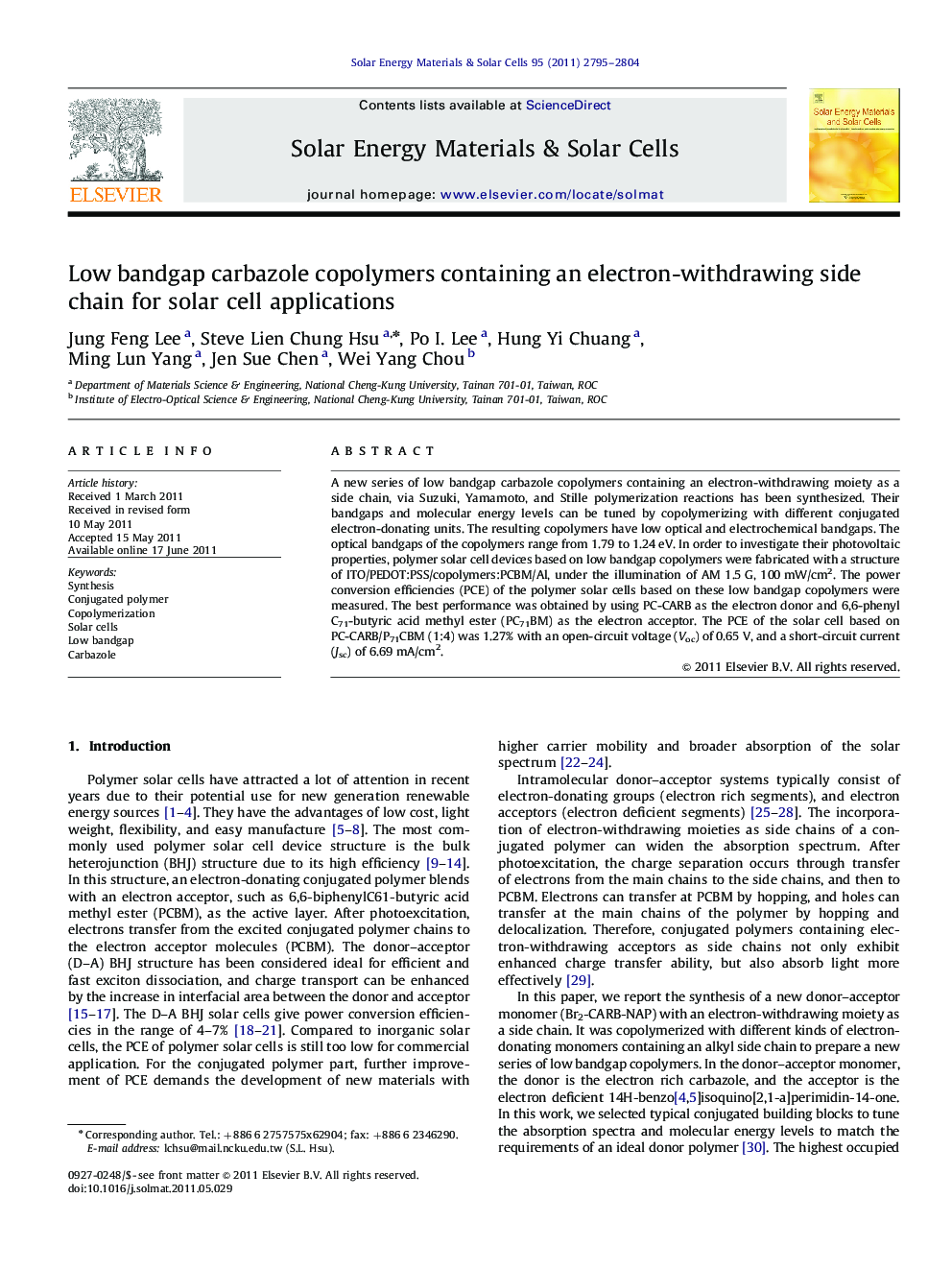| Article ID | Journal | Published Year | Pages | File Type |
|---|---|---|---|---|
| 78611 | Solar Energy Materials and Solar Cells | 2011 | 10 Pages |
A new series of low bandgap carbazole copolymers containing an electron-withdrawing moiety as a side chain, via Suzuki, Yamamoto, and Stille polymerization reactions has been synthesized. Their bandgaps and molecular energy levels can be tuned by copolymerizing with different conjugated electron-donating units. The resulting copolymers have low optical and electrochemical bandgaps. The optical bandgaps of the copolymers range from 1.79 to 1.24 eV. In order to investigate their photovoltaic properties, polymer solar cell devices based on low bandgap copolymers were fabricated with a structure of ITO/PEDOT:PSS/copolymers:PCBM/Al, under the illumination of AM 1.5 G, 100 mW/cm2. The power conversion efficiencies (PCE) of the polymer solar cells based on these low bandgap copolymers were measured. The best performance was obtained by using PC-CARB as the electron donor and 6,6-phenyl C71-butyric acid methyl ester (PC71BM) as the electron acceptor. The PCE of the solar cell based on PC-CARB/P71CBM (1:4) was 1.27% with an open-circuit voltage (Voc) of 0.65 V, and a short-circuit current (Jsc) of 6.69 mA/cm2.
graphical abstractFigure optionsDownload full-size imageDownload as PowerPoint slideHighlights►A new series of low bandgap carbazole copolymers has been synthesized. ►The molecular energy levels can be tuned by different electron-donating units. ►The optical bandgaps of the copolymers ranged from 1.79 to 1.24 eV. ►The PCE of the solar cells based on PC-CARB:PC71BM (1:4) was 1.27%.
